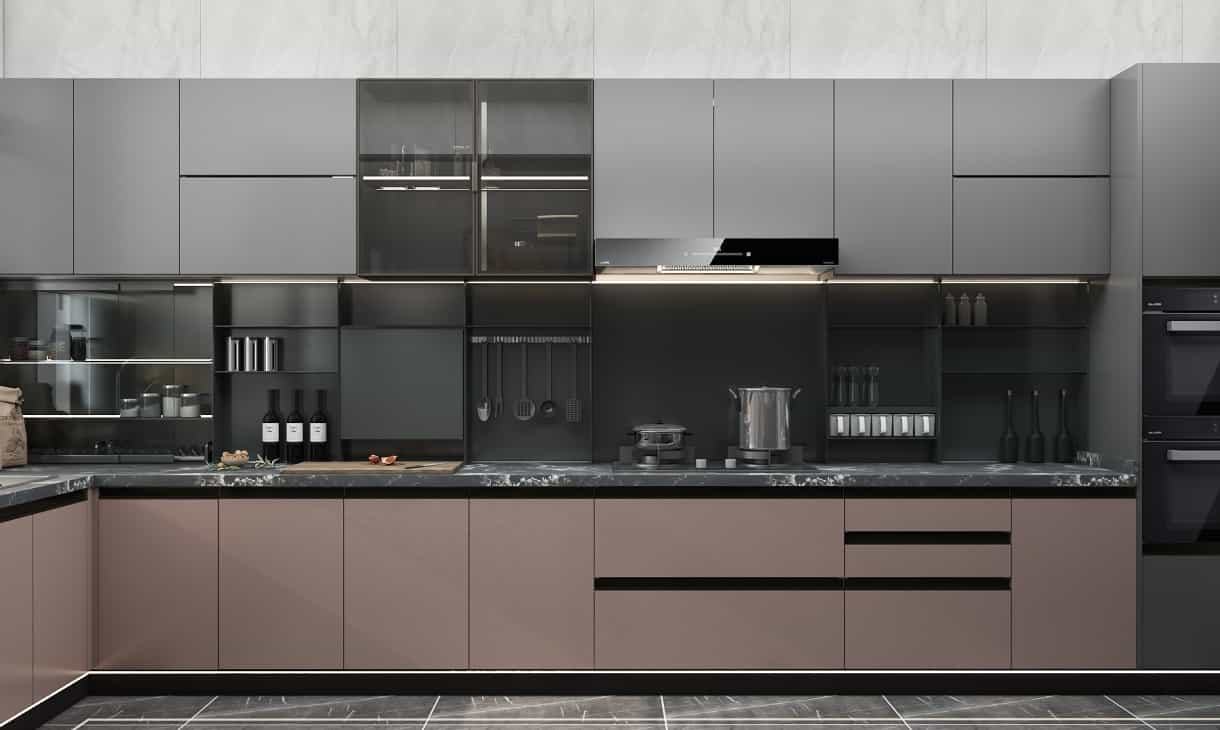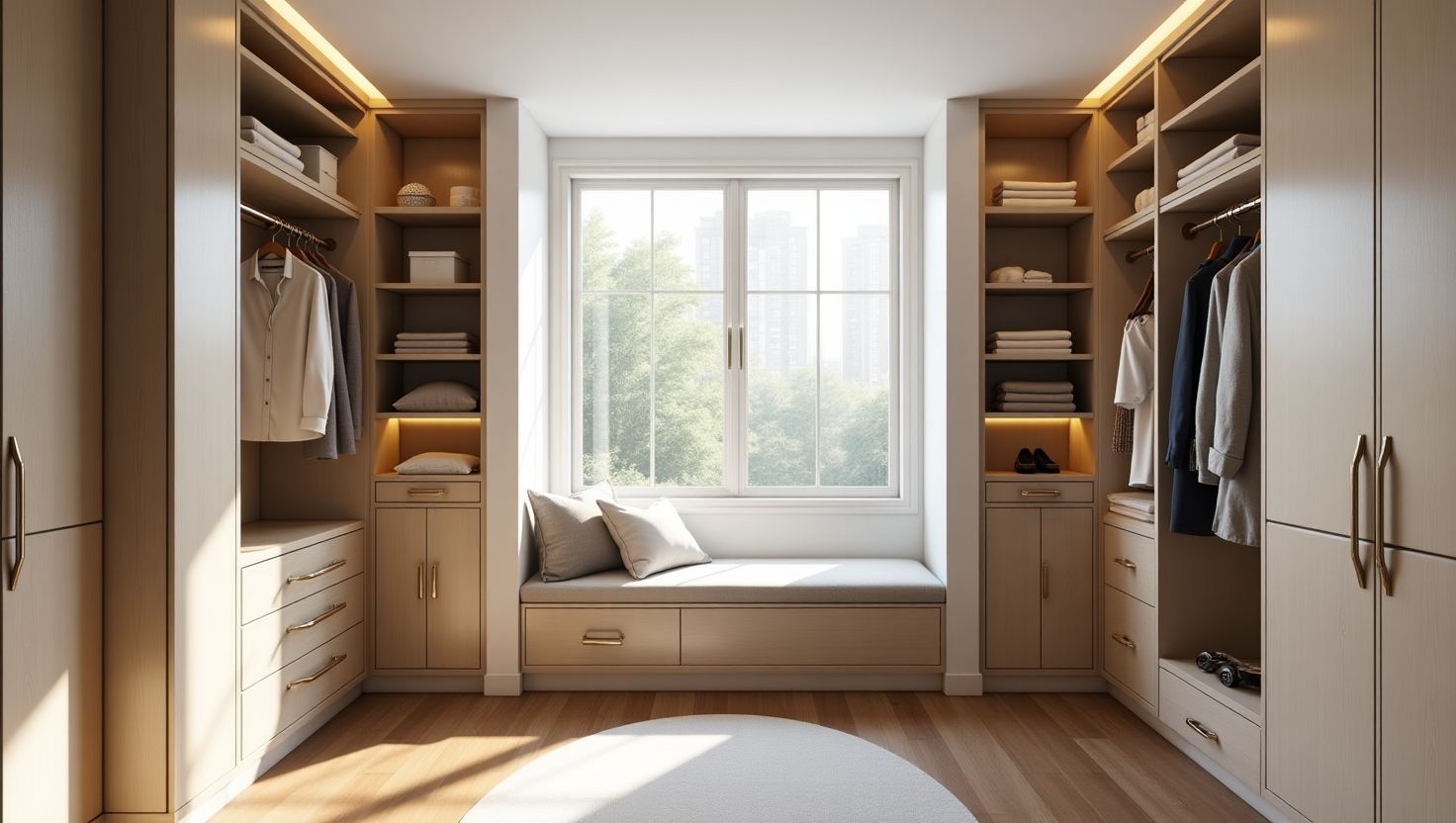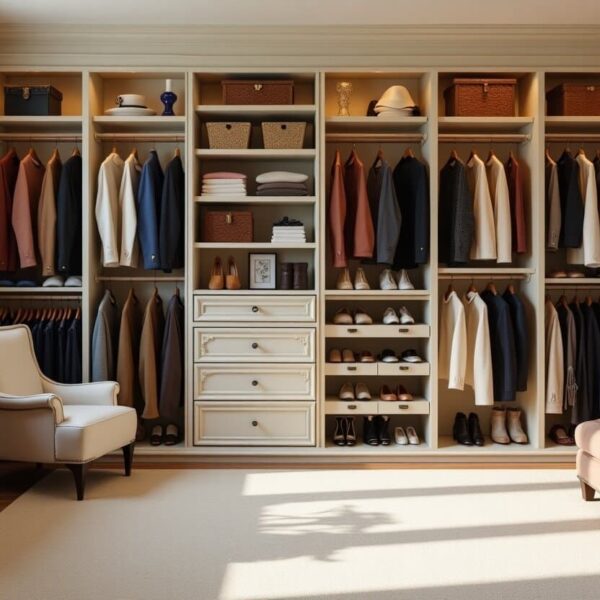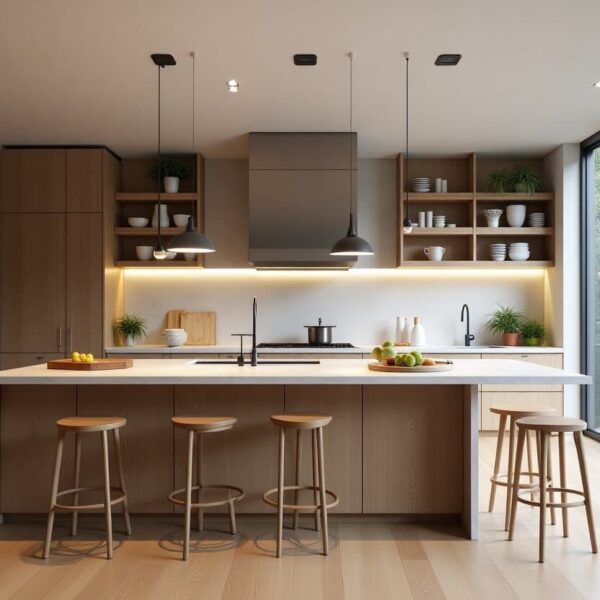Custom wardrobes are supposed to bring order, beauty, and tailored functionality to your home. But what happens when the wardrobe you so carefully planned doesn’t fit as expected?
This article guides you through a calm and smart response strategy: how to identify the root cause, how to communicate effectively with your supplier, and how to avoid repeating the same mistake again—especially when ordering a custom wardrobe from China.
Why Doesn't My Custom Wardrobe Fit?
Before you do anything else, become a detective. Was it a measurement error, shipping damage, an uneven wall, or a misunderstanding with the designer?
Check and record these key points immediately: Grab your tape measure or laser measurer and carefully compare the actual installed dimensions against your design drawings; small discrepancies can make a big difference. Also, investigate if there’s material deformation, such as wood expanding or contracting due to humidity or dryness, which can cause subtle but significant fit issues. Assess the installation quality to see if the team followed the plans precisely, as sometimes the problem isn’t the cabinet itself, but how it was put together. Lastly, make sure you have all your original records – photos, original drawings, and order contracts – handy, as these will be undeniable evidence for future discussions.

Top 10 "Misfit" Traps & How to Solve Them
Misjudging the "Actual Usable Space" in Alcoves (Wall Niches)
The flaw here is ordering based on the alcove’s stated dimensions, only to find during installation that a protruding baseboard or a pipe eats up 5-10cm, preventing doors from opening or shrinking internal space. This happens because alcoves aren’t always perfectly square or clear; obstructions invisibly reduce your “effective depth” or width.
To fix this, use a laser measurer (more accurate than tape) to record the alcove’s maximum usable depth/width. For example, if the alcove is 60cm deep but the baseboard protrudes 5cm, design your wardrobe for 55cm deep (leaving 1-2cm for clearance). If pipes are an issue, ask your designer for a notched cabinet where the pipe is encased within the cabinet, not obstructing storage.
Ignoring Vertical Space – Only Using Chest-Height Storage
This flaw manifests when your wardrobe has a meter of empty space above, while items below are crammed. It occurs because in smaller spaces, the “golden storage zone” extends vertically, from floor to ceiling. Not utilizing it is pure wasted potential.
To fix this, install top cabinets (up to the ceiling) for seasonal items like winter coats or sweaters, using a collapsible step ladder for easy access. You can also raise main hanging rods to 1.8 meters (where most people can reach on tiptoes), placing drawers or shelves for frequently used items below, and use vertical hanging organizers for scarves or underwear to save horizontal rod space.
Drawer/Shelf Dimensions Don't Match Item Sizes
The problem here is that drawers are too shallow (20cm) for handbags, shelves are too high (30cm) causing stacked clothes to tumble, or shoe shelves are too low (10cm) for high-top shoes. This happens because the essence of custom design is to “adapt to your items,” not generic standards, meaning wrong dimensions lead to misused space.
To fix it, declutter first, then measure your most commonly used items. If your average handbag is 25cm deep, make drawers 28cm deep (allowing 3cm clearance). If high-top shoes are 18cm tall, make shelves 20cm high. Also, opt for modular, adjustable shelves to future-proof your wardrobe, allowing easy adaptation if item sizes change.
Not Enough Hanging Rods, Too Much Stacking
This flaw appears when you have only one hanging rod, with the rest of the space dedicated to folded clothes, leading to tall, unstable stacks that are hard to navigate and messy. This is because folded clothes often take up more space (about 20% more) than hung clothes and are a hassle to retrieve.
To solve this, add 2-3 more hanging rods (e.g., layered: long coats on top, shirts below). Invest in slim hangers (like velvet flock hangers) – they save up to 50% space and prevent clothes from slipping. Finally, place items that must be folded (like knitwear) in drawers or lidded storage boxes to maintain order.
Overlooking Corner Cabinets – Wasting "Golden Corners"
This issue is seen when your wardrobe is in a corner, but the corner itself is empty or uses a flat design, leading to wasted space. It happens because corners are “hidden storage” gems in small spaces, and not utilizing them can waste up to a third of potential storage.
To fix it, install corner hanging rods (e.g., 135-degree rotating) for jackets or long dresses, making them easy to access. You can also opt for corner drawers with slides for underwear or socks, utilizing depth efficiently. For L-shaped wardrobes, consider open corner shelves for frequently used bags or shoes, creating visual flow.

Choosing Swing Doors That Block External Space
The problem here is that your wardrobe has swing doors that require 15-20cm of external clearance when open, blocking nearby beds or drawers from opening fully. This occurs because swing doors “eat into” your room’s active floor space, making smaller rooms feel even more cramped.
To fix this, choose sliding doors (bypass doors) that don’t need external clearance, ideal for compact rooms. Consider bi-fold doors if your wardrobe is in a corner, as they save more opening space. Finally, select mirror or light-colored door materials to visually expand the room.
Insufficient Internal "Movement Space" – Too Cramped
This flaw manifests when the wardrobe interior has too many shelves and drawers, making the central aisle too narrow (less than 60cm), forcing you to squeeze sideways to find clothes. This happens because a cramped interior makes you not want to use the wardrobe, leading to clothes piling up outside, ironically making the wardrobe seem smaller.
To fix it, maintain a 60-70cm wide aisle (minimum space for comfortable movement). Place frequently used items in the middle section (eye to chest height), with less-used items on top or bottom shelves, avoiding constant bending or reaching.
Neglecting Seasonal Storage Design
The issue here is that summer dresses and winter coats are mixed, making daily clothes hard to find and the wardrobe constantly overflowing. This occurs because seasonal items monopolize “everyday space,” leaving your wardrobe in a perpetual state of overload.
To solve this, incorporate adjustable shelves – lower them for summer dresses, raise them for bulky winter coats. Also, utilize top cabinets or under-bed storage boxes for off-season clothes, freeing up daily wardrobe space.
Too Many Open Shelves Create Visual Clutter
This flaw appears when your wardrobe has numerous open shelves, piled with clothes, bags, and shoes, creating a messy, visually smaller look. This happens because open shelves expose clutter directly, visually “magnifying” the sense of disorganization.
To fix it, replace some open shelves with cabinet doors or drawers to hide the mess. If using open shelves, use uniformly colored storage boxes (e.g., off-white, grey) to create a neat, cohesive look.
Overlooking Corner Cabinets – Wasting "Golden Corners"
The problem here is that daily shirts are on the top shelf, requiring a ladder, while frequently used bags are on the bottom, requiring bending down. This wastes time and discourages wardrobe use.
To solve this, layer by frequency: High Frequency (daily) items go in the middle section (eye to chest height) for shirts, pants, daily bags. Medium Frequency (weekly) items go in the lower section (waist to knee height) for shoes, scarves. Low Frequency (monthly/seasonal) items go in the top section (below ceiling) for coats, sweaters. You can also use retractable rods for high-frequency hanging items like shirts, so you can grab them without a ladder.

Immediate Action: Contact Your Supplier!
Finding a problem with your custom wardrobe can feel overwhelming, but immediate, effective communication with your supplier is key.
Gathering Your Evidence
Before you contact them, you need to gather your evidence. Don’t just rely on “he said, she said.” Take clear photos or videos of the specific issue. A video showing a drawer not closing because a bag protrudes, or you straining to reach a high rod, is far more convincing than words alone. You should also provide precise data. Use a tape measure to quantify the problem. For example, stating “The drawer is 15cm deep, but my daily bag is 25cm. I need it to be at least 25cm deep” is much more effective.
Finally, explain the context of impact. How does this misfit affect your daily life? “Because the drawer can’t hold my work bag, it sits on the sofa, making the living room look cluttered.”
Effective Communication Strategies
When you speak, use language your designer understands, avoiding “vague complaints.” Instead of saying, “Your drawers are uselessly small!” try, “I’d prefer the drawer depth to be 25cm, as my commute bag is 25cm deep and I’d like it to fit neatly inside.” When describing specific scenarios, avoid generalities like “I need more shoe space.” Instead, say, “I have 10 pairs of high-top shoes, each 18cm tall. The current shelf is only 15cm, causing them to bend. Can we adjust the shelf height to 20cm?”
And always try to offer solution options rather than just stating a problem. Instead of “This wardrobe is bad, you need to fix it,” suggest, “I find the hanging rod too high. Can it be lowered by 10cm? Or perhaps we could add a shorter hanging rod below for my everyday shirts?”
Prioritizing Issues and Avoiding Pitfalls
When negotiating, prioritize your issues so you don’t overwhelm your supplier with too many demands. Categorize problems into three tiers to show you’re reasonable: “must fix” (critical issues like unreachable rods), “would like to fix” (enhancements like changing handle finishes), and “can live with” (minor aesthetic issues). For instance, you could say, “I think there are two priority issues: first, the drawer depth isn’t enough for my bags (must fix); second, the hanging rod is too high to reach (must fix). As for the door color, I can accept it if the first two issues are resolved.”
Crucially, Aviod using emotional language like “You’re so incompetent!” or “I’ll never use you again!” as this shuts down cooperation. Don’t bring up past grievances like “That shoe cabinet you did last time was bad too,” as it expands the conflict. And never resort to threats like “I’ll leave a bad review!” as this only leads to defensive, not proactive, solutions.
Have a project in mind? Send a message.
Get the catalog for free
How to Fix a Misfit Custom Wardrobe
The solutions for a misfit wardrobe depend entirely on the problem’s severity.
For minor adjustments, think simple fixes like adding filler strips to close small gaps, carefully re-cutting minor panels for a better fit, or performing small re-alignments. If the issue is more significant, requiring moderate rework, this might involve re-manufacturing specific components, such as a single door panel or a drawer box, or making more substantial adjustments to the internal configurations. In cases of severe discrepancy, where the wardrobe is fundamentally unusable due to major errors, you might need to discuss a full removal and re-manufacture or negotiate appropriate compensation.
It’s also important to remember to clarify responsibility if a third-party installer caused the error, to ensure the blame isn’t unfairly placed on the manufacturer.

When to Involve a Professional Mediator
If direct negotiation with your supplier proves unsuccessful, it might be time to consider involving a professional mediator. One option is to engage a third-party inspection agency to obtain an unbiased measurement report, which can provide objective evidence of the issue. Another avenue is to initiate a payment dispute through your payment platform or credit card company, as they often have arbitration services. Lastly, you can seek assistance from industry associations or consumer protection agencies, which may offer mediation services or guidance on consumer rights.
Prevention for Future Projects
To minimize risks, always opt to use professional measurement teams rather than attempting DIY measurements, as this significantly reduces the chance of costly errors. Before any production begins, ensure you sign detailed contracts that clearly specify acceptable error margins, outline responsibility boundaries for various stages, and detail material specifications. It’s also vital to provide complete design references, including detailed drawings, on-site photos, and even videos, to give your designer and manufacturer a comprehensive understanding of the space. Finally, always request the factory to review and confirm the drawings before production begins; this crucial step acts as a final safeguard against potential misunderstandings. Choosing a responsible, communicative, and experienced supplier is crucial for successful customization.

Why Choose NextHome Furnishing for Your Custom Wardrobe?
Customization thrives on partnership, not one-way delivery. Don’t give up on the dream of a perfect custom cabinet product; with the right process, you can still achieve exactly what you envision. The key to successful customization lies in choosing a China wardrobe supplier who is responsible, communicative, and experienced.
At NextHome Furnishing, we’ve honed the art of creating spaces that truly fit, backed by over a decade of deep experience in high-end custom home cabinetry and loose furniture. We specialize in every detail, from kitchen cabinets and wardrobes to diverse storage solutions, understanding the intricate elements that transform a house into a home. This extensive expertise means we anticipate challenges and deliver sophisticated, functional designs. Whether your project demands OEM services for large-scale needs or unique bespoke production, our flexible approach caters to every requirement. We don’t just build wardrobes; we offer integrated furnishing solutions for your entire home.
Visit our website today to explore our portfolio or reach out for a personalized consultation. Let’s work together to create something exceptional.
Contact NextHome Now!
We are here to help you with your business needs. We have a team of experts who are always eager to help you.



